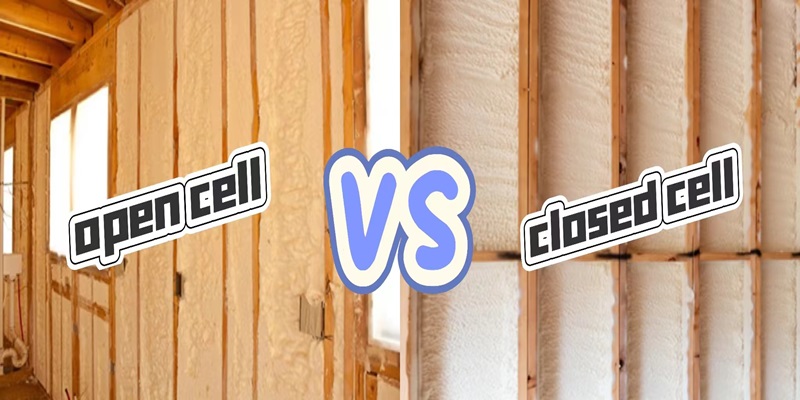Overview of polyurethane foam materials: from microstructure to macroscopic performance
As one of the most widely used polymer materials today, the performance differences of polyurethane foam mainly come from the different designs of pore structures. Although closed-cell foam and open-cell foam have similar chemical compositions, they show completely different physical properties due to differences in microstructure, which is inseparable from the precise regulation of polyurethane catalysts.
The characteristic of closed-cell foam is that each bubble is surrounded by a complete polymer wall to form an independent and closed microstructure. This structure gives the material excellent thermal insulation performance (thermal conductivity is usually 0.018-0.028W/(m·K)) and high mechanical strength (compression strength can reach 150-500kPa). Open-cell foam achieves good acoustic performance (NRC can reach 0.6-0.9) and air permeability (air circulation rate exceeds 90%) through an interconnected pore network. Understanding the formation mechanism and performance differences of these two foams is crucial to the correct selection of catalyst systems and optimization of production processes.
Chemical mechanism of pore structure formation and catalyst regulation
Mechanism of closed-cell foam formation
The formation of closed-cell structure is a dynamic equilibrium process, which mainly depends on the following three key factors:
1. Gas generation rate: determined by the reaction rate of isocyanate and water (foaming reaction)
2. Polymer matrix strength development rate: determined by the reaction rate of isocyanate and polyol (gel reaction)
3. Surface stability: maintained by the synergistic effect of surfactant and catalyst
When the gel reaction rate is fast enough, the polymer matrix can form a wall film of sufficient strength before the bubble internal pressure reaches the critical value, thereby keeping the pores intact. Our experimental data show that the use of a dedicated catalyst system can increase the closed-cell rate from 85% to more than 95%, and the thermal conductivity coefficient is reduced by 15-20% accordingly.
Principle of preparation of open-cell foam
The formation of open-cell structure depends on the precisely controlled “window rupture” mechanism. When the following conditions are met, the cell wall will rupture in time to form an open-cell structure:
- The gel reaction is relatively delayed, so that the cell wall remains ductile during the expansion stage
- The gas generation rate and the polymer strength development rate reach the optimal ratio
- The surface tension is appropriately reduced at the critical point
By adjusting the ratio of amine catalyst to metal catalyst, we can accurately control the open-cell ratio within the range of 80-98% to meet different application requirements. For example, acoustic foams usually require an open-cell ratio of more than 92%, while filter materials may require a completely open-cell structure.
Selection and optimization strategy of catalyst system
Special catalyst system for closed-cell foam
The production of high-performance closed-cell foam requires balancing three key reactions:
1. Foaming reaction (gas generation): triethylenediamine (TEDA) catalysts such as MXC-102 are usually selected
2. Gel reaction (polymer formation): Stannous octoate MXC-T12 series is recommended
3. Trimerization reaction (improved temperature resistance): Special isocyanurate catalysts such as MXC-15
The MXC-CF200 series composite catalysts we developed are particularly suitable for demanding closed-cell foam applications and have the following characteristics:
- Closed-cell rate is stable at more than 93%
- Dimensional change rate <1.5% (70℃, 48h)
- Perfect compatibility with HFO blowing agents
- Comply with fire protection standards in the construction industry
Special catalyst solution for open-cell foam
The key to the production of open-cell foam is to delay the gel reaction while ensuring sufficient post-curing. Our MXC-OF300 series offers:
- Precisely controlled open porosity (85-99% adjustable)
- Excellent resilience (ball rebound > 65%)
- Low odor characteristics (VOC < 50μg/m³)
- Good compatibility with flame retardants
It is particularly noteworthy that our newly developed MXC-OF350 catalyst achieves precise control of the open cell structure through a unique delayed activation mechanism, successfully solving the closed cell defect problem commonly seen in high-resilience foams.
Technology development trends and innovative solutions
With increasingly stringent environmental regulations and diversified terminal application needs, polyurethane catalyst technology is facing new challenges and opportunities:
1. Ultra-low thermal conductivity closed-cell foam system:
- Develop catalysts that perfectly match the new generation of HFO blowing agents
- Nanocomposite catalytic technology improves closed-cell integrity
- Thermal conductivity target: <0.018W/(m·K)
2. Intelligent open-cell foam technology:
- Gradient open porosity control (different porosity in different areas)
- Environmentally responsive catalyst system
- Recyclable open-cell foam catalyst
3. Sustainable catalytic solutions:
- Bio-based catalyst development
- Low VOC emission system
- Low temperature curing technology (energy saving of more than 30%)
Professional technical support and services
We provide comprehensive technical support for polyurethane manufacturers around the world:
- Laboratory test service: provide preliminary test report within 72 hours
- Production line optimization: on-site technical guidance and process adjustment
- Custom development: develop exclusive catalyst system according to special needs
- Technical training: Regularly hold foam technology and catalyst application seminars
For detailed technical information or to apply for free sample evaluation, please contact our technical team through the following methods:
- Email: info@mingxuchem.com
- Website: https://www.mingxuchem.com/
Choosing the right catalyst system is a key step in optimizing foam performance and improving production efficiency. Let us work together to promote the innovative development of polyurethane foam technology.
Post time: May-06-2025

